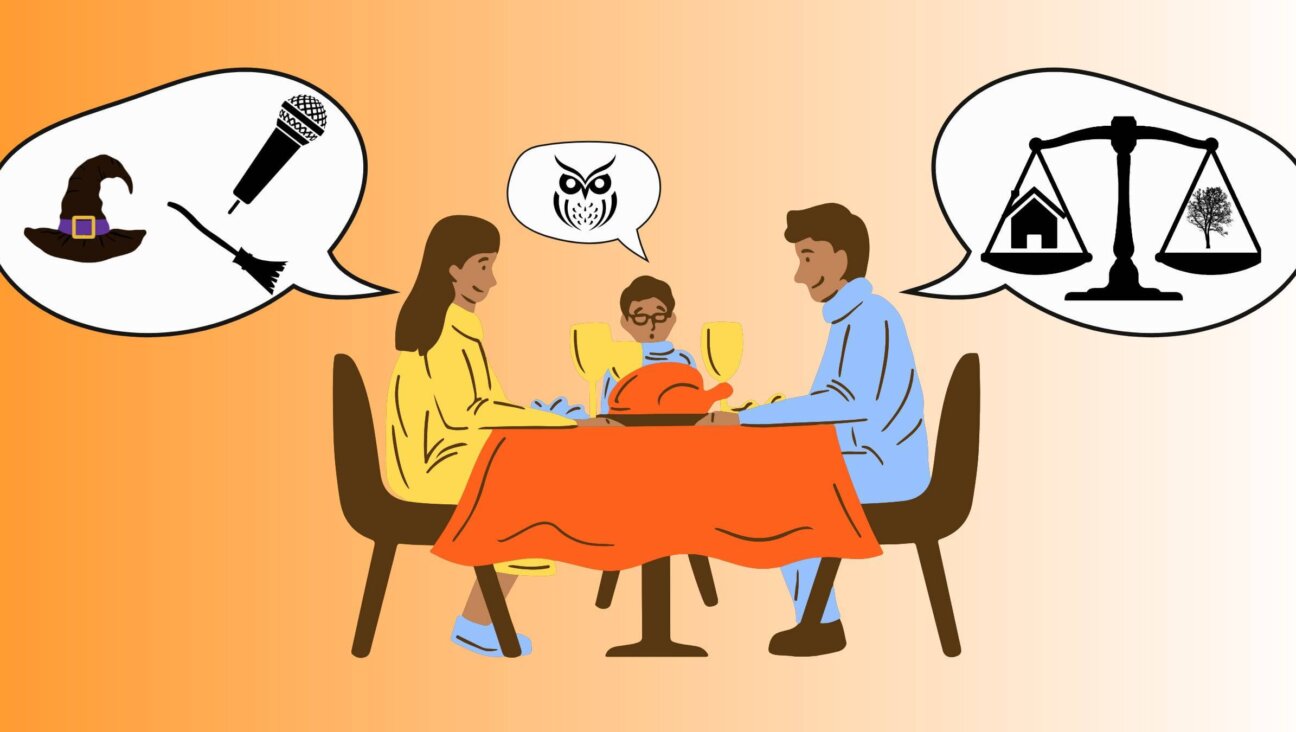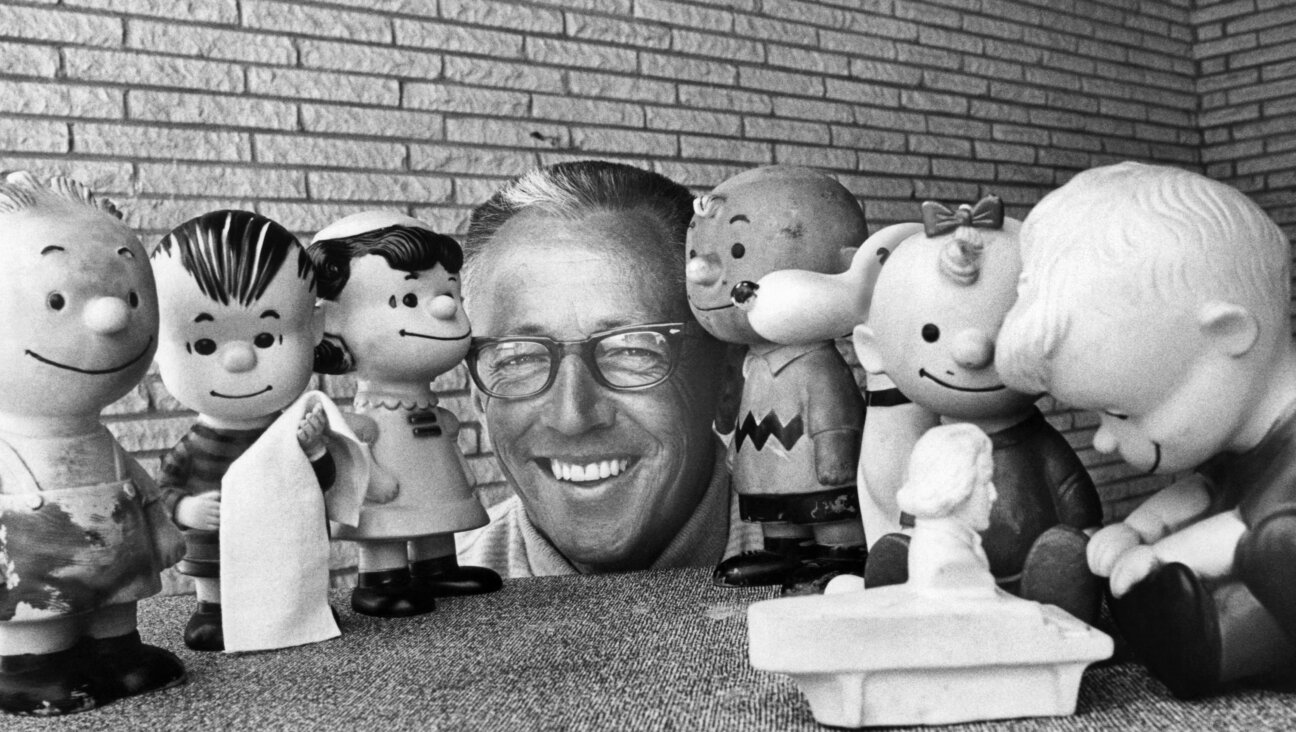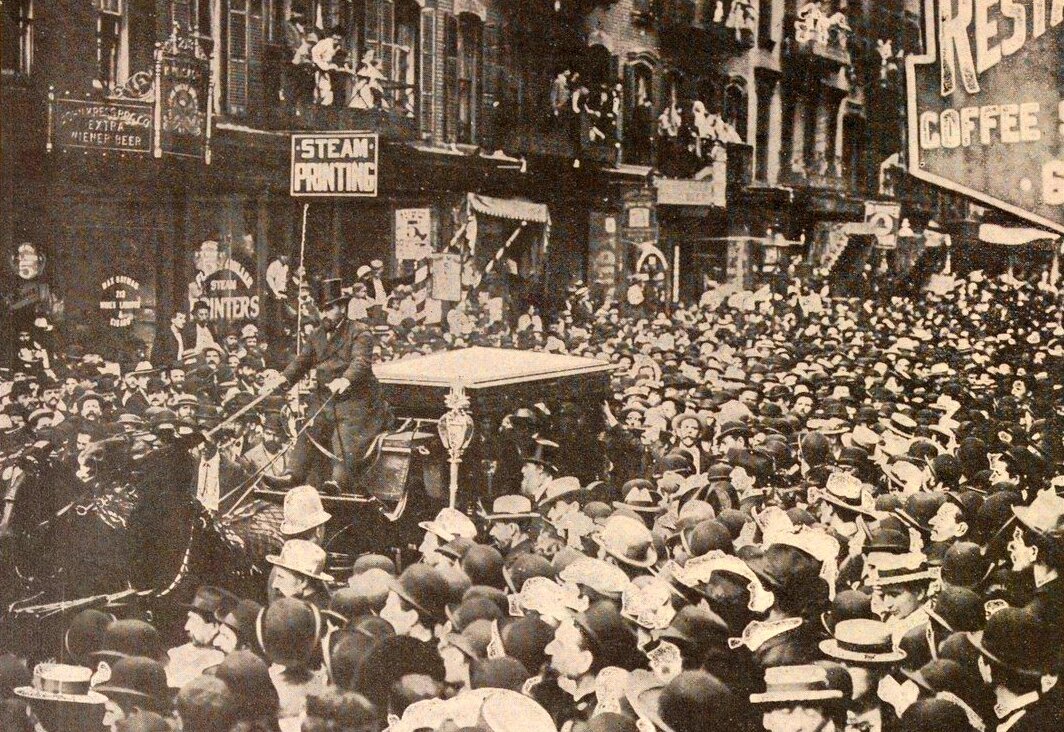A Driving Force in Jewish Life
Much has been written of late about the Interstate highway system, which celebrated its 50th birthday just last month. A legacy of the 1950s, along with Elvis Presley and Lawrence Welk, the Montgomery bus boycott and the atom bomb, its 47,000 miles of roadways transformed the American landscape and modern American life in equal measure. Thanks (or no thanks) to the Interstate, the car — and with it, family road trips, motels and fast-food restaurants like McDonald’s — became synonymous with postwar America. So, too, did the suburbs, whose stunning efflorescence would not have taken place were it not for the steadily growing primacy of the car and the availability of neatly paved, swiftly moving roads like those that came into being as a result of the Federal-Aid Highway Act of 1956.
The nation’s embrace of automobility profoundly affected its spiritual life, as well, prompting dozens of denominations to leave the city for greener pastures. Among those religious movements to make the suburbs their home was Conservative Judaism, which experienced its greatest and most sustained period of growth during the 1950s and ’60s. Keenly attuned to the potentialities of suburban Jewish life, to its family-oriented rhythms and collective pursuit of affability, Conservative Judaism moved speedily and farsightedly to plant itself alongside the split-level homes and garages of its future congregants in what some contemporaries described as a “new adventure in Jewishness.”
Even as it sparked the development of an outwardly robust suburban Jewish community, the automobile soon enough generated considerable controversy, especially when it came to the observance of the Sabbath. Despite the presence of modern, well-appointed synagogues, fewer and fewer Jews could be found within them. Taking to their chrome-studded cars to do errands, play a round of golf or enjoy a family outing, suburban Jews had all but replaced Shabbos with Saturday. Some Conservative rabbis, greatly disturbed by this situation, were quick to point an accusatory finger at their congregants’ Chevrolets, blaming “autoeroticism” for the Sabbath’s fall from grace. The Sabbath, as Minneapolis rabbi Albert I. Gordon glumly related, “has become more a day of recreation than a day of prayer and rest.”
Although damned in some quarters, the car was heralded in others as a potential source of salvation. It’s time to face facts, a growing number of liberal Conservative rabbis exhorted their more traditional colleagues. Pitting sociology against the shulhan arukh, they insisted that to complain about the car’s deleterious effect on contemporary Jewish life was not the way to go. Instead, they welcomed the possibility of harnessing the power of the car to the power of ritual. Why not make it religiously as well as culturally acceptable to drive to synagogue? After all, getting American Jews to attend Sabbath services was surely more important than holding fast to Jewish law, they reasoned.
Those rabbis of a more traditional cast of mind wouldn’t hear of it. Welcoming the car and its passengers into the synagogue parking lot would breed “lawlessness” and make of Conservative Judaism a “religion of convenience,” they charged. Or, as Rabbi Emil Schorsch (father of Ismar Schorsch, outgoing chancellor of the Jewish Theological Seminary) put it: “Too many of our people do not want to observe the Sabbath, whatever excuse or reason you may give them. Why should we play ball with this insincerity?”
Eventually, as pressure mounted from within to come to terms with the vexed relationship between suburbanization on the one hand and the retention of the Sabbath on the other, the movement’s rabbinical authority, the Rabbinical Assembly’s Committee on Jewish Law and Standards, decided to tackle the issue head on. We would be “remiss in our calling, were we content to leave the Sabbath to its fate,” its members explained, fearful lest the end product be a “Sabbath-less Judaism.” Delving deeply into the halachic literature, they hoped to find a viable solution and, in the process, do “something constructive towards the revitalization of Sabbath observance.” The result was the Responsum on the Sabbath.
After months of intensive self-scrutiny and closely considered textual analysis in which the pros and cons of overturning the traditional prohibition against driving on the Sabbath were carefully weighed, the Committee on Jewish Law and Standards ruled in favor of driving to shul on Shabbos. “It is our considered opinion that the positive values involved in the participation in public worship on the Sabbath outweigh the negative values of refraining from riding in an automobile,” the authoritative body declared, sanctioning the use of the car on the Sabbath provided it was headed in the direction of the synagogue, not the shopping center.
Not everyone agreed with the ruling. Fearful lest the prospect of allowing Conservative Jews to drive to synagogue would set a bad precedent and open the floodgates to even greater and more publicly sanctioned violations of Jewish law, those opposed to the decision counseled restraint. “To modify Jewish law in order to bring it into conformity with the [modern] way of life is tantamount to amending the Constitution of the United States so as to harmonize it with the viewpoint of an anarchist,” Rabbi Robert Gordis charged in his minority opinion, giving voice to profound dissatisfaction with both the ruling per se and the logic that sustained it. That said, the movement as a whole threw its collective weight behind the decision in the hope that driving to shul on Shabbos would actually revitalize, rather than attenuate, the Sabbath.
For all its good intentions, the Responsum on the Sabbath did little to change things. The sanctuary and, for that matter, the synagogue parking lot remained as empty as they had been before driving to synagogue became a matter of policy. In this instance, as in so many others characteristic of modern Jewish life, the siren call of the open road, of freedom, proved just too hard to resist.
A message from our CEO & publisher Rachel Fishman Feddersen

I hope you appreciated this article. Before you go, I’d like to ask you to please support the Forward’s award-winning, nonprofit journalism during this critical time.
We’ve set a goal to raise $260,000 by December 31. That’s an ambitious goal, but one that will give us the resources we need to invest in the high quality news, opinion, analysis and cultural coverage that isn’t available anywhere else.
If you feel inspired to make an impact, now is the time to give something back. Join us as a member at your most generous level.
— Rachel Fishman Feddersen, Publisher and CEO





















